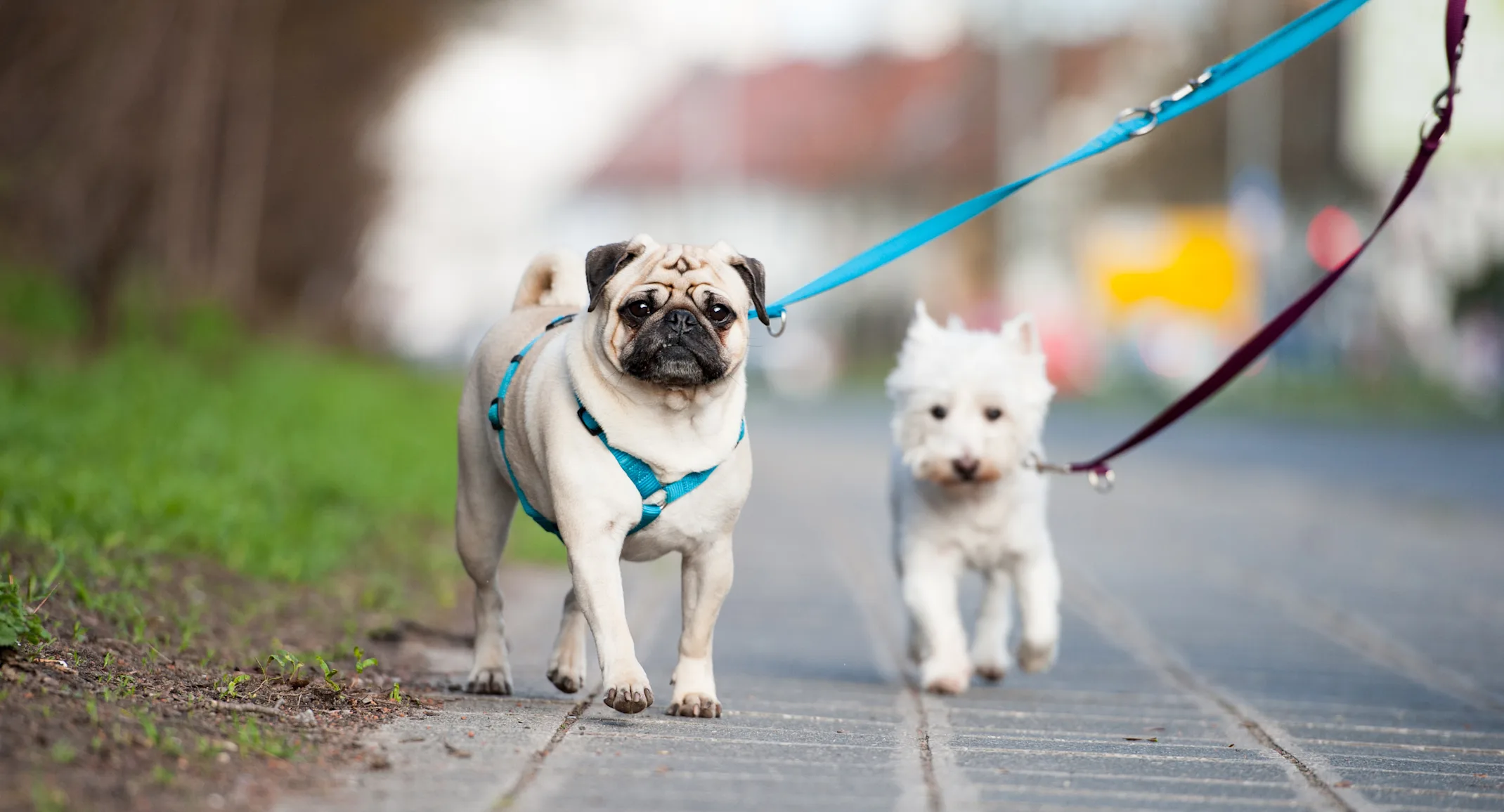Hot pavement dangers for pets
When the sun beats down on asphalt, concrete, or sand, these surfaces can become extremely hot. While we might feel the heat radiating from the ground as we walk in shoes, pets are much more vulnerable to these hot surfaces. Although your dog’s or cat’s paws may seem impervious to injury, in reality, they have sensitive paw pads that can burn, blister, and crack when exposed to scorching hot surfaces.
Keep in mind that if the air temperature is 30 degrees Celsius, asphalt can heat up to a dangerous 55 degrees. At this temperature, it only takes 60 seconds for a dog's paws to burn. Remember, too, that darker pavements absorb more heat and become hotter faster.
Paw pad injuries in pets
Paw pads can quickly become blistered and burned, so closely monitor your pet when walking outside for:
Limping
Refusing to walk
Licking or chewing at the paws
Darkened, discolored, or reddened pads
Blisters
Whining or showing discomfort
First aid for burned paw pads in pets
If you suspect your pet has burned their paws, take immediate action by:
Moving away — Remove your pet from the hot surface, either by bringing them indoors or finding a shaded area.
Cooling the paws — Gently rinse your pet’s paws with cool water to soothe the burn. Do not use ice cold water, as this can do more harm than good.
Applying a balm — Use pet-safe paw balms or aloe vera to moisturize and heal the pads.
Seeking veterinary care — If your pet’s paw pads have blisters, burns, or discoloration, or your pet seems uncomfortable, seek veterinary care for further treatment.
How to prevent burned paw pads in pets
With a little preparation and planning, you can help prevent your pet from injuring their paw pads. Use the following tips to keep your furry friend’s pads healthy all summer long:
Time your walks — One of the easiest ways to prevent paw pad injuries is to walk your pet during cooler parts of the day, such as the early morning or late evening. Avoid the peak sun hours between 10 a.m. and 4 p.m. when pavement temperatures are at their highest.
Test the pavement — Before heading out, test the pavement with the back of your hand. If you can't comfortably hold it there for 10 seconds, it's too hot for your pet's paws. This simple test can prevent a painful experience for your furry friend.
Use protective gear — Consider investing in protective gear made to shield your pet’s paws from the heat. Specially designed pet booties or paw wax can provide a barrier between hot surfaces and your pet's paws.
Choose cooler surfaces — When walking your pet, choose shaded or grassy areas over asphalt or concrete. Grass and dirt paths are significantly cooler and more comfortable for your pet's paws.
Hot-day alternatives for pets
When the conditions are too hot to exercise and play with your pet outside, move the fun indoors with the following toys, activities, and games:
Puzzle toys — Stimulate your pet's mind with interactive puzzle toys that hold hidden treats.
Indoor fetch — Use soft toys to play fetch in a spacious room.
Training sessions — Teach new tricks or reinforce obedience training.
Agility course — Design an agility course out of furniture and household items, encouraging your pet to navigate jumps, tunnels, and obstacles.
Hide-and-seek — Hide from your pet in a different room, call their name, and reward them with a small treat for sniffing you out.
By being aware of the dangers of hot pavement and taking preventive measures, you can protect your four-legged friend from painful paw injuries. However, accidents happen and your pet may suffer burned, blistered, or injured paw pads while out playing or exercising. If you notice your pet limping, licking their paws, or showing discomfort, contact our Mountainside 24/7 Animal Emergency team for help.

